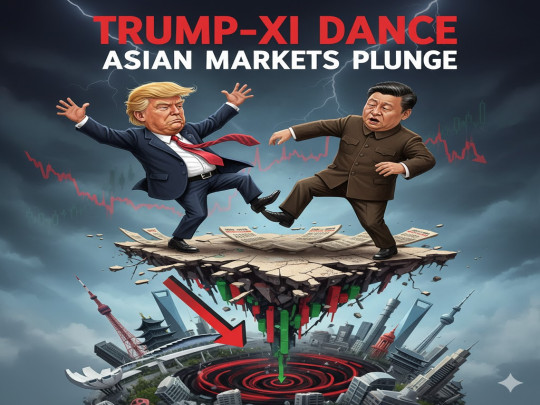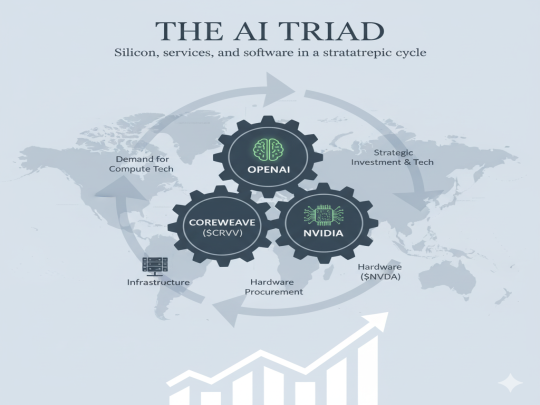Market Summary: S&P 500 and Nasdaq Reach Record Highs Amid AI Optimism and Fed Rate Cut Hopes
The S&P 500 and Nasdaq closed at record highs, fueled by optimism over artificial intelligence, strong corporate earnings, and expectations of Federal Reserve rate cuts. Despite recent volatility and ongoing policy uncertainties, the market has shown remarkable resilience, with tech and consumer sectors leading the rally. Easing trade tensions and a drop in market volatility have further boosted investor confidence as the outlook for AI and monetary policy continues to drive gains.

The U.S. equity markets have entered a fresh phase of bullishness, with both the S&P 500 and Nasdaq Composite closing at all-time highs. This rally is fueled by optimism surrounding artificial intelligence, strong corporate earnings, and growing expectations of a more accommodative Federal Reserve. Despite lingering policy uncertainties, the market has shown notable resilience, shaking off earlier volatility.
Record-Setting Rally: S&P 500 and Nasdaq at New Peaks
On June 28, 2025, the S&P 500 rose 0.52% to close at 6,187.68, surpassing its previous record. The Nasdaq Composite also advanced 0.52% to close at 20,273.46, breaking past its former peak. These milestones highlight a dramatic rebound from the near-bear market conditions seen in April, when both indices had experienced significant declines.
Key Drivers of the Rally
1. Artificial Intelligence and Tech Sector Leadership
Technology stocks—especially those tied to AI—have led the charge. Enthusiasm surged following a strong outlook from a major chipmaker, renewing investor confidence in the sector. Nvidia is nearing a historic $4 trillion valuation, solidifying its leadership in the AI space. Microsoft and other mega-cap tech names are also propelling the rally. AI chip sales in data centers have been surging, with continued growth anticipated as demand for cloud and enterprise AI infrastructure expands.
2. Strong Earnings and Corporate Resilience
Positive surprises in corporate earnings have significantly boosted sentiment. For example, Nike delivered a stronger-than-expected quarterly performance, with EPS and revenue both exceeding forecasts. The company’s shares jumped over 15%, lifting the consumer sector. Nike’s strategic investments in growth segments like women’s sports and running, along with new partnerships, have reinforced investor confidence in its future outlook.
3. Easing Geopolitical and Trade Tensions
Investor fears related to geopolitical and trade risks have eased. A recently brokered ceasefire between Israel and Iran helped stabilize oil prices and reduce inflation concerns. Simultaneously, progress in U.S.-China trade discussions and hopes for future agreements have bolstered investor optimism, despite continued policy unpredictability.
4. Federal Reserve Policy and Rate Cut Expectations
The market is increasingly pricing in interest rate cuts from the Federal Reserve in the latter half of 2025. Lower borrowing costs are expected to support equity valuations. Forecasts suggest two rate cuts this year, with further easing anticipated through 2027. This shift in policy stance has encouraged investor risk appetite and supported the rally in equities.
Volatility Declines as Focus Shifts to Fundamentals
The CBOE Volatility Index (VIX) has dropped to its lowest level since earlier in the year, signaling reduced investor anxiety. As the focus shifts from geopolitical shocks to earnings and monetary policy, investor participation has broadened, further fueling market momentum.
Resilience Amid Policy Uncertainty
While the market has staged an impressive comeback, risks remain. Earlier in the year, markets were rattled by the introduction of new tariffs, which nearly pushed major indices into bear market territory. Though sentiment has recovered, the potential for abrupt policy shifts—particularly in trade—continues to pose a risk.
Market enthusiasm was also lifted by the resolution of the Middle East conflict and dovish comments from Fed officials, both of which helped ease inflation fears and supported equity valuations.
AI Market Outlook: Sustained Expansion Ahead
The AI sector remains a central force in driving market gains. Investment in AI infrastructure is on the rise, with demand from both hyperscale and enterprise users. The market is forecast to grow significantly through 2026, supported by the proliferation of AI-powered devices across industries. Companies like Microsoft and Apple are embedding AI capabilities deeply into their platforms, signaling long-term momentum.
Sector Performance and Global Index Trends
The current rally is not limited to U.S. markets. Global indices including the FTSE, CAC, DAX, and Nikkei 225 have also posted gains, reflecting widespread improvement in investor sentiment. In the U.S., Nike’s strong results have bolstered consumer stocks, while the tech sector continues to outperform thanks to the AI boom. The S&P 500, Nasdaq, and Dow Jones have all registered robust gains, with the Dow up over 1% on the day.
Looking Ahead: Balancing Risks and Opportunities
Despite the prevailing optimism, certain risks remain:
-
Policy Uncertainty: Shifts in trade, tariff, or interest rate policy could quickly disrupt market momentum.
-
Economic Growth: Inflation remains a concern, but the bigger risk is a potential slowdown in growth.
-
Valuation Concerns: Skyrocketing AI-related stock prices could face pullbacks if growth expectations are not met.
On the positive side, continued AI innovation, a strong earnings season, and a more accommodative Fed policy could keep the rally alive. Sectors likely to benefit include technology, consumer discretionary, and select industrials tied to global commerce.
Conclusion: Markets Poised for Further Gains—But Stay Alert
The U.S. stock market’s impressive recovery highlights its resilience in the face of geopolitical and policy challenges. Fueled by AI-driven growth, strong earnings, and dovish monetary expectations, equities have found renewed strength. However, investors should remain cautious and well-diversified as the path forward is likely to be shaped by evolving macroeconomic conditions and potential policy shifts.
The months ahead will determine whether the current rally has staying power. For now, market momentum appears to be firmly rooted in a combination of innovation, corporate strength, and easing financial conditions.



